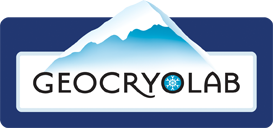Nunavummiut, Parks Canada and Science
September 8, 2015 in post by Godin.E
The 22nd of June 2015, Bylot Island, Nunavut.
Around mid June 2015, we heard from our bi-daily radio communication with the outside world that visitors were interested in visiting Goose Camp . Parks Canada’s rangers and manager ( Sirmilik Park ) visiting us is a regular event, we know each other by name, appearance or project (yeah that guy working in the gully) after all these years. Rangers visit us about twice a year to check that everything is well done at the camp, that the site is well kept, that everyone is healthy and happy and to share a lunch with the camp staff (coffee and chocolate chips cookies is usually a winner). While lunching we share the latest news : animal observations regional news, hockey playoff, project advancements and other important things.
But this time a special visitor would join the group: a MP from the Nunavut government. He would like to see what we are doing and the camp. It is unusual, but not exceptional. The last person from a government instance visiting us (as best as I can remember) was sometime in 2009-2010. He was wishing to visit the nearby fossil forest which Alexandre Guertin was working on at the moment.

Figure 1: Everything was in order at the camp, as usual. June 2015.
All that is quite interesting, I like surprises! When the day came, everything was perfect at the camp (as usual, Figure 1 ). Visitors were visiting the camp under the wing of Yannick Seyer and Dom Fauteux – followed by a break for lunch-cookies-hockey-coffee. Our special guest, M. Joe Enook, is a member of the Legislative Assembly of Nunavut (Constituency: Tununiq), who heard among other things that there was an ongoing project on ‘permafrost erosion and gullying’ and was willing to take a hike to see what it looks like.
Soon, we were leaving toward the gully with M. Enook and Parks Canada staff. A bizarre thought crossed my head while guiding the group: I was finding quite convenient to have this gully very nearby the camp : perfect to show visitors ! But simultaneously, I was wondering that I am probably one of the few to find anything positive about having a very active gully nearby any kind of infrastructure. Oh well – all depend on the context.

Figure 2: From left to right: Yannick Sayer, Dominic Fauteux, M. Joe Enook and Etienne Godin, and the gully in background. The 22nd of June 2015.
When we arrived on site, M. Enook and Carey (Manager from Parks Canada) told me they heard and knew about gullying. But further they told me that pictures, describing the gully orally or even looking at it while flying over by helicopter was not as real as standing right on it. When standing a meter from the gully, they realized first hand how fast it occurred, how wide and big and how the tundra changed following the erosion. Gully channels, retrogressive thaw slumps, all around slumping or tundra denudation, it was quite obvious to the visitors what could be wrong with the permafrost terrain
when ice-wedges are disturbed. M. Enook, a scholar and a well informed person about climate change related problems told us that many people from the community have no solid ideas about what are the dynamics of such a gully on the landscape, and that he would have this as a topic in his next broadcast at the public radio channel !
This made me all realize one thing : considering our effort for science outreach in a classical way, such as presenting kiosks, making posters, conferences and discussions with peoples from the community, disturbed permafrost can be a concept which could be hard to relate. I think that this time with M. Enook for whom the communication with his people is quite a natural thing, permafrost erosion will get to people in a way I did not expected. In the future, it is quite important to consider how community members interested by science and who are good speakers are among the best people to broadcast knowledge using an approach which can be simultaneously interesting and accessible for the people from the community.
M. Enook, in any case, thank you for coming !
Ce message est également disponible en : French

Nunavummiut, Parks Canada and Science
by
Geocryolab
is licensed under a
Creative Commons Attribution-NonCommercial 4.0 International License
.
